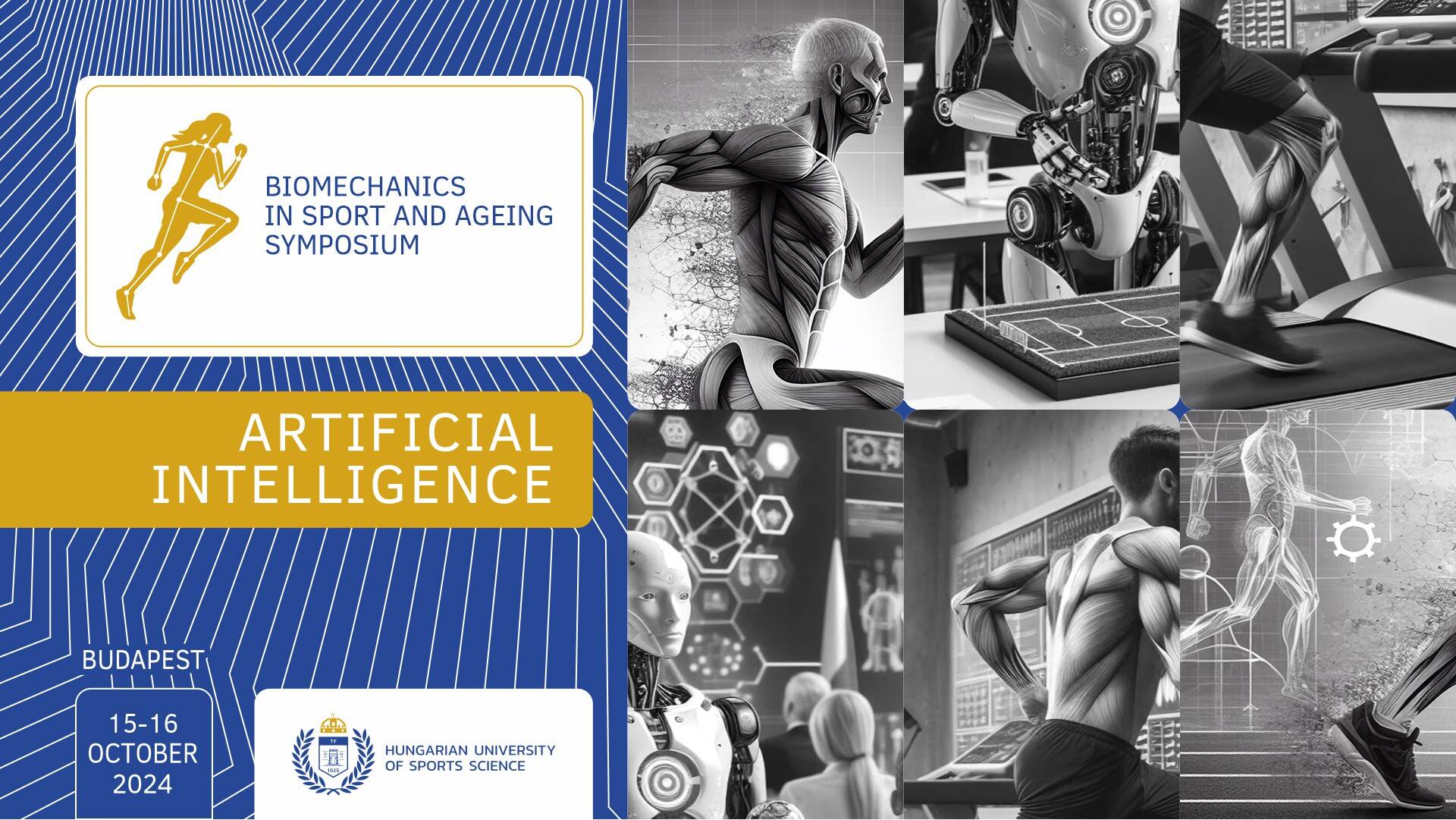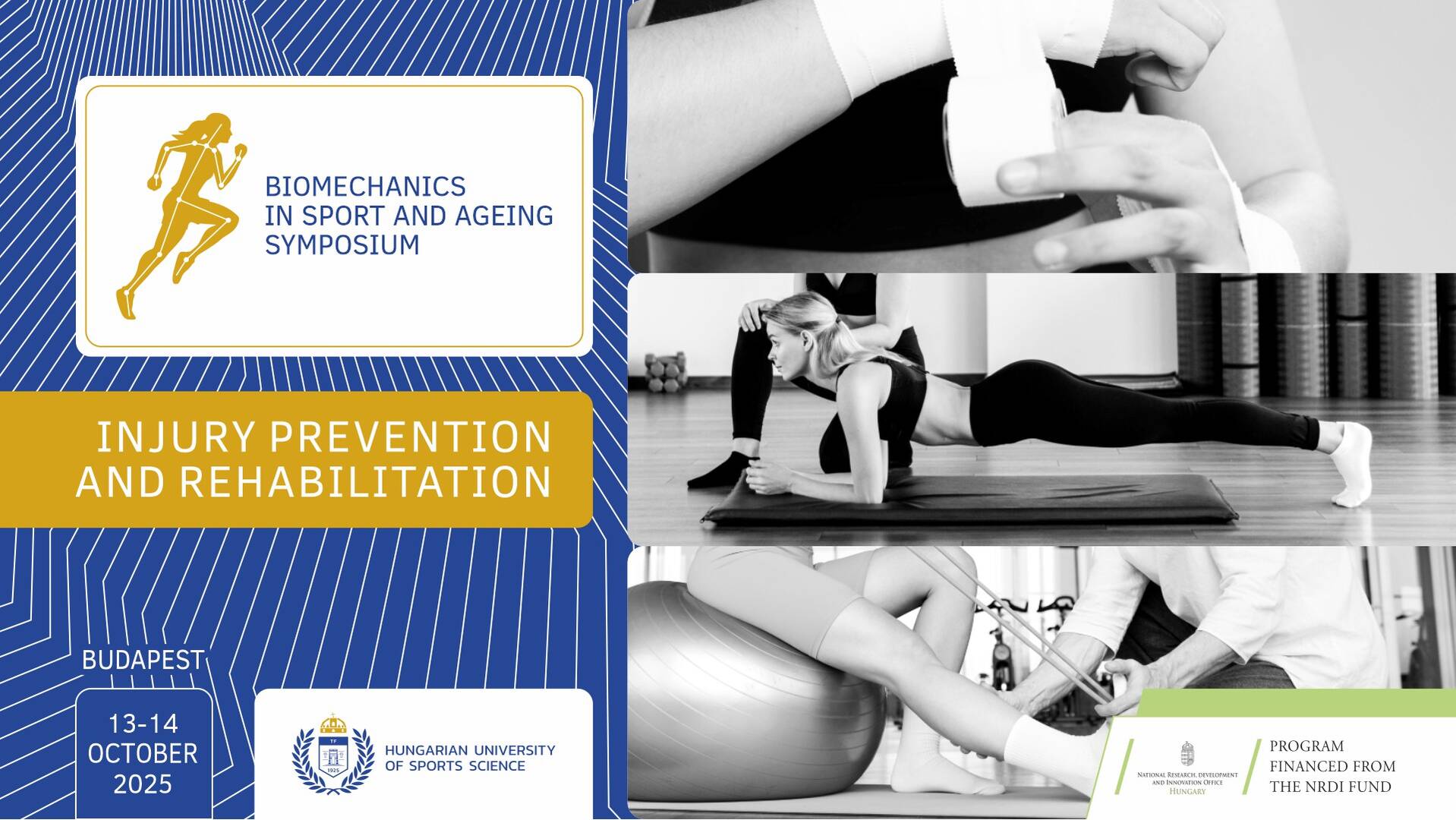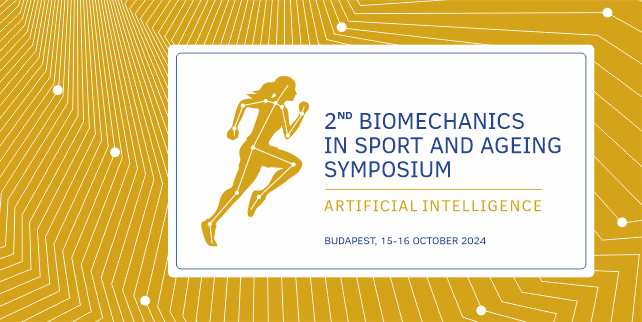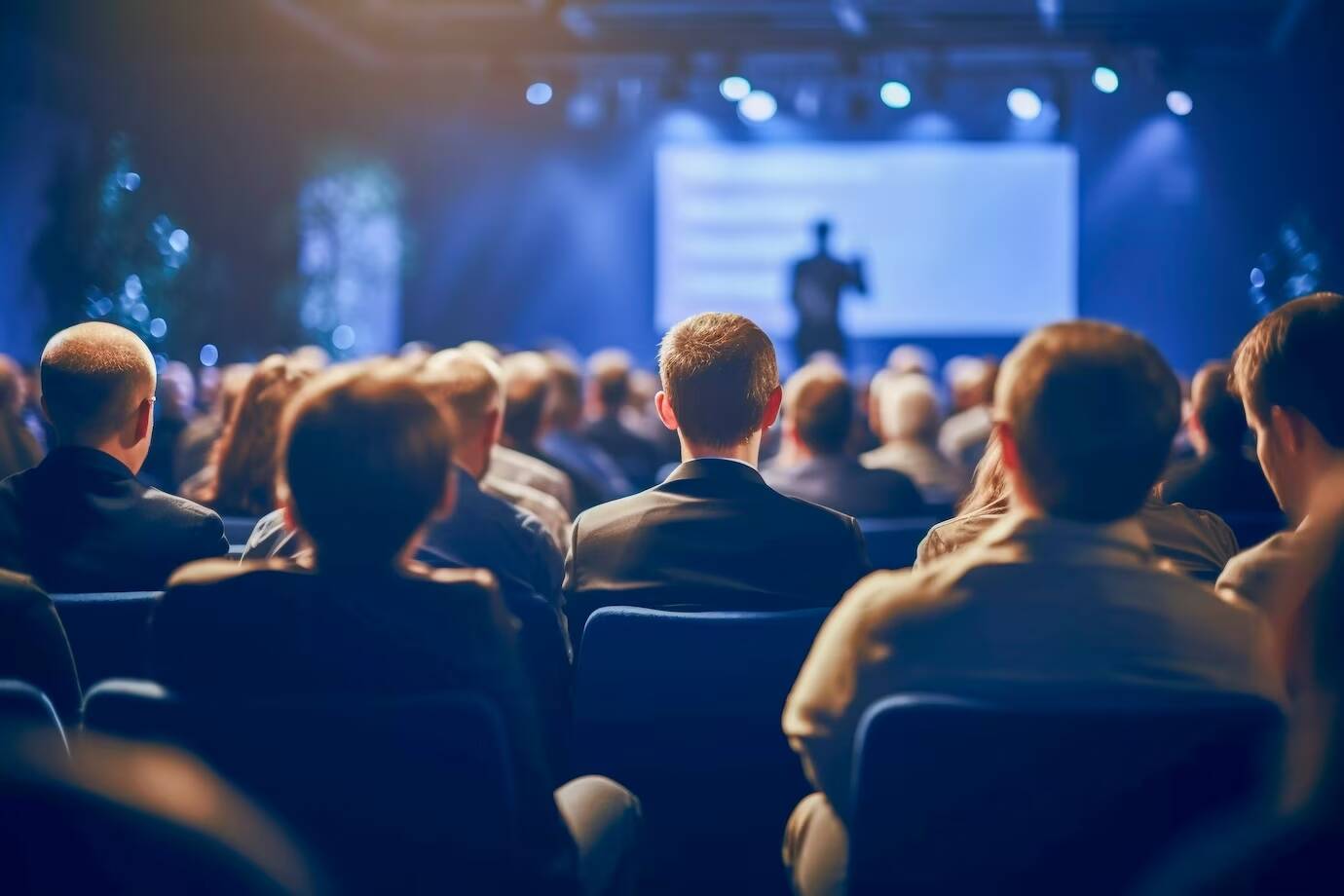Invited speakers to submit an abstract in word.docx format, comprising up to 350 words. Format the abstract as follows:
- Title
- Name
- Affiliation
- Email address
- Abstract text (up to 350)
- Acknowledgements
- All abstracts will be complied into a pdf online booklet.
Submission deadline: 27 September 2024
tf.hu/bsa |
Program | Abstract booklet | Registration | Speakers | Student poster award | Continuing education credits | Conference venue | Budapest | Accommodation | Social programs | Committees | Contact
Welcome to the 2nd Biomechanics in Sport and Ageing Symposium: Artificial Intelligence, organized by the Hungarian University of Sports Science and the Department of Kinesiology, Budapest, Hungary, 15-16 October 2024!
The aim of the symposium is to provide a scientific platform for a state-of-the-art update on the progress of artificial intelligence, AI, in sport biomechanics and ageing. Artificial intelligence relies on computers to execute commands that historically required human intelligence. Now, we have apps that offer talking digital assistant services, respond to voice and text requests, it can answer questions, write poetry, generate images, draft emails, analyze personal photos, set a timer or place a phone call. Indeed, as we can surmise it from Turing’s seminal paper, AI builds computational units that mimic human intelligence and abilities: language, communication, comprehension of concepts, automated thinking, (machine) learning, computer vision, and movements via robotics (1). Supervised or unsupervised machine learning, i.e., the science of coding computers to learn and behave as humans do, as a subset of AI, allows us to discern patterns and structure in data. Deep learning optimizes supervised learning and trains models to learn how to map an input to an expected output (2). All this occurring at a neck breaking pace so that “global governance is needed, otherwise the risk is social collapse” opines Paolo Benanti, a Vatican and Italian government advisor on AI ethics.
The tools of AI are also becoming ubiquitous in sport biomechanics and ageing research. Sport and ageing might appear unrelated. Yet we consider sport and ageing as complementary: assessment and training methods developed in sport science are transformed into diagnosis and treatment of ageing-related impairments. Along the spectrum from low and to high levels of physical and cognitive function, the current symposium highlights how AI is leveraged to assess and increase top performance, predict motor and cognitive function, and ultimately deliver improved care for all individuals across the lifespan, including athletes and seniors (3).
Accordingly, the lead keynote will introduce AI and the following two keynotes will provide a state-of-the-art overview of AI in sport and ageing. From 6 countries, 12 invited area-expert speakers will give (big) data-based examples for how AI is used in sport and ageing with respect to: Body structure and exercise prescription; Motor-cognitive function; Injury and disease, and Performance assessment and prediction in a workshop format.
Welcome to Budapest! Network, learn, and enjoy the symposium!
Sincerely yours,
Prof. dr. Tamás Sterbenz, PhD, Rector and Patron of the symposium
Prof. dr. h. c. Tibor Hortobágyi, PhD, chair of the scientific committee
Mr. Dániel Mezei and Ms. Eszter Kerekes, chairs of the organizing committee
References:
- Turing AM. On computable numbers, with an application to the Entscheidungsproblem. Proc London Math Soc 58: 230–65, 1936.
- LeCun et al Deep learning. Nature 521: 436–44, 2015.
- Zhang et al Leveraging physiology and artificial intelligence to deliver advancements in health care. Physiol Rev 103: 2423–50, 2023.

tf.hu/bsa |
Program | Abstract booklet | Registration | Speakers | Student poster award | Continuing education credits | Conference venue | Budapest | Accommodation | Social programs | Committees | Contact
Welcome to the 3rd Biomechanics in Sport and Ageing Symposium: Injury Prevention and Rehabilitation, organized by the Hungarian University of Sports Science and the Department of Kinesiology, Budapest, Hungary, 13-14 October 2025!
The aim of the symposium is to provide a scientific platform for a state-of-the-art update on the progress in Injury Prevention and Rehabilitation with respect to sport biomechanics and ageing.
Sport and ageing might appear unrelated. Yet we consider sport and ageing as complementary: assessment and training methods developed in sport science are transformed into diagnosis and treatment of ageing-related impairments.
The symposium starts with two keynote presentations, which will be free of charge and open to the public. First, professor Anthony Blazevich (Edith Cowan University, Australia) will focus on muscle function and injury prevention in sport. Assistant professor Jason Franz (UNC Chapel Hill & NC State University, USA) will provide an overview of how age affects the biomechanics of tendons in the lower extremities.
Then, registrants for the symposium will have the opportunity to attend two sessions of invited presentations on the biomechanics of the ageing musculoskeletal system and two sessions of invited presentations on injury prevention and rehabilitation on muscle and tendon injuries.
Session 1 will address the disease of the 21st century, muscle wasting or sarcopenia. Recent epidemiological studies and meta-reviews suggest that low skeletal muscle quantity and quality are associated with and can, if not corrected, exacerbate clinical conditions. Prevention of skeletal muscle loss and rehabilitation of dysfunctional muscles are thus at the pinnacle of experimental research. This is especially true with respect to ageing, as the senior segments of society have been growing in every country around the world. Because Parkinson’s disease often evolves in conjunction with ageing, it is relevant to minimize muscle loss in this debilitating condition.
Session 2 will also feature an international array of distinguished researchers addressing the exciting hypothesis that long-term sport participation protects against the age-related decline in musculoskeletal health. While this expectation is attractive, the data extracted from master athletes can be contradicting. Therefore, it is timely to update the role lifelong physical activity plays in joint, bone, and muscle-tendon function.
Session 3 will kick off the second day of the symposium with a focus on new developments in understanding hamstring muscle function in relation to the mechanisms of injury, prevention strategies including adaptations to training, and rehabilitation of the hamstrings complex from the injured state.
Session 4 will provide a state-of-the-art overview of recent developments in Achilles tendon injuries. Presentations will provide a fresh perspective on how injuries modify the structure and function of the Achilles tendon. The session concludes with new insights into how to select exercise for the rehabilitation of Achilles tendinopathy.
The 3rd Symposium will end on a practical note: the local biomechanics group organize multiple workshops. This will provide hands-on experience on technology used to provide real-time feedback on movement kinematics and novel methods to examine muscles and tendons in sports and ageing.
Special thank you goes to our sponsors. Without their support, the 3rd Biomechanics in Sport and Ageing Symposium would not possible.
Welcome to Budapest! Network, learn, and enjoy the symposium!
Sincerely yours,
Prof. dr. Zsolt Radák, PhD, Vice-Rector for Research and Innovation and Patron of the symposium
Dr. András Hegyi, PhD, co-chair of scientific committee
Prof. dr. h. c. Tibor Hortobágyi, PhD, co-chair of the scientific committee
Mr. Dániel Mezei, Ms. Eszter Kerekes, Ms. Kata Kádár, Dr. Annamária Péter, PhD co-chairs of the organizing committee

Budapest can be reach by airplane from direct flights from most European cities. Please scroll down for more information on how to get to the venue from the Airport.
From several European main cities Budapest may also be reached easily by train, bus or even car.
Please find travel options, approximate travel time, assisting links and approximate prices from cities such as Vienna, Bratislava, Ljubljana, Oradea, Belgrade, Zagreb, München, Frankfurt here below. Prices are indications only, please refer to the appropriate selling points; also, links are only for assistance, other options should be look at by the participants of the conference.
Vienna
- Train: Arrival: Kelenföld Budapest. Duration: 2:30 hours. Depart: Vienna Central https://www.wienerlinien.at/
- Bus: 2:50 hours, from approx. €11, https://global.flixbus.com/
- Car: 2:30 hours (243 km), Highway A4 and M1
- Airplane: 45 min, connecting flights from other European cities. E.g., https://www.austrian.com
Bratislava
- Train: 2:40 hours. Depart: Železničná stanica Bratislava-Petržalka, https://dpb.sk/
- Bus: 2:35 hours, from approx. €8, https://global.flixbus.com/
- Car: 2 hours (200 km), M1 highway)
Ljubljana
- Train: 8 hours, departing from Ljubljana Train Station, https://potniski.sz.si/
- Bus: 6:30 hours, from approx. €14, https://global.flixbus.com/
- Car: 462 km (4:20 hours) A1/E57 and M7 highways
Oradea
- Train: 5:40 hours. Depart: Piața București, https://www.cfrcalatori.ro/
- Bus: 5:10 hours, from approx. €18, https://global.flixbus.com/
- Car: 3:30 hours (312 km), M3 highway
Belgrade
- Bus: 6 hours, from approx. €16, https://global.flixbus.com/
- Car: 3:45 hours (380 km), A1 and M5 highways
Zagreb
- Bus: 4:30 hours, from approx. €17, https://global.flixbus.com/
- Car: 3:30 hours (350km), E65/E71 and M7 highways
München
- Train: 6:45 hours. Depart: Hauptbahnhof, https://www.oebb.at/
- Bus: 8:40 hours, from approx. €29, https://global.flixbus.com/
- Car: 7 hours (651 km), A94, A8 and M1 highways
- Airplane: 1:15 hours, connecting flights from other European cities. E.g.: https://www.lufthansa.com
Frankfurt
- Train: 9: 40 hours, https://www.bahn.de/
- Car: 9 hours (964km), A3, A8, A1, A4 and M1 highways
- Airplane: 1:45 hours, connecting flights from other European cities. E.g.: https://www.lufthansa.com
From the Airport
- Address of the University: Alkotás u. 42-48, Budapest, 1123
- Liszt Ferenc Airport official website: https://www.bud.hu/en
Bus
- From the airport, you can choose the direct bus line 100E towards the city centre (Deák Ferenc tér). Here below you may find 2 suggested routes.
Route #1
- Stop at Deák Ferenc tér (100E bus), Szél Kálmán tér (M2 metro), Csörsz utca (Tram 17/61)
- Please take the bus line 100E from the airport and stop at it’s final destination of bus line 100E, which is the Deák Frenec tér. This is a square, where you can take the metro line 2 (red line) towards Déli pályaudvar, train station. Please get off at stop: Szél Kálmán tér, and take the tram line 17 towards Savoya Park or tram line 61 towards Móricz Zsigmond körtér. Please get off the tram at stop Csörsz utca.
Route #2
- Stop at Kálvin tér (100E bus), Móricz Zsigmond körtér (M4 metro), Csörsz utca (Tram 17/61)
- Please take bus line 100E at the airport and get off at Kálvin tér. Here you can go underground and take metro line 4 (green) going toward Kelenföld. You can get off the metro at the Móricz Zsigmond körtér, and take the tram 17 (towards Bécsi út/ Vörösváry út) or tram line 61 (to Hüvösvölgy) and get off the tram at the stop Csörsz utca.
Cost and tickets
- Tickets can be purchased from the purple ticket machine that says „BKK tickets and passes” you can purchase single tickets, these cost 350 FT, this is less then a Euro. And you can also choose the 24 hour ticket for the cost 2.500 FT, this is about 6,2 euro. The airport line 200E and 100E have a special ticket costing 1.500 Ft, that’s 3,7 euro. Card and cash payments are both accepted by the ticket machine and can also be done online
- For more info and for online ticket purchase: https://bkk.hu/jegyek-es-berletek/arak/
Taxi
- Taxi can be reached directly at the airport. Please be aware of non-professionals trying to grab your attention. It is advised to avoid accepting their offers, as the official taxi line has a small building as you walk outside the airport. It is the colour yellow and you have to get in line to arrange the ride. You have to tell the address of your destination, and then they help you by showing which car is going to be the one taking you. Sometimes, when the taxi line is busy, you might have to wait, but it should not take too long for the car to arrive. Prices are approximately 26 to 34 euro, this can be paid by cash or card.
- Phone: (+36) 1/222-2222
- Mobile: (+36) 20/222-2222, (+36) 30/222-2222, (+36) 70/222-2222
- Website: www.fotaxi.hu
- E-mail:
This email address is being protected from spambots. You need JavaScript enabled to view it. ,This email address is being protected from spambots. You need JavaScript enabled to view it.
Minibus
Airport Shuttle
- Bureaus can be found on both Terminal 2A and 2B at the arrivals level. They transfer 0-24 however, reservations have to be made at least 12 hours in advance.
- Phone: (+36) 1/296-8555 (0-24 available)
- Website: www.airportshuttle.hu
- Reservation (e-mail):
This email address is being protected from spambots. You need JavaScript enabled to view it.
Minibud
- Bureaus can be also be found on Terminal 2A and 2B at the arrivals level. The airport shuttle service should be ordered at least 5 hours prior to the departure of your flight ont he website or by telephone.
- miniBUD call center: +36 1 550 0000
- Website: https://www.minibud.hu/booking
- Email:
This email address is being protected from spambots. You need JavaScript enabled to view it.




















































